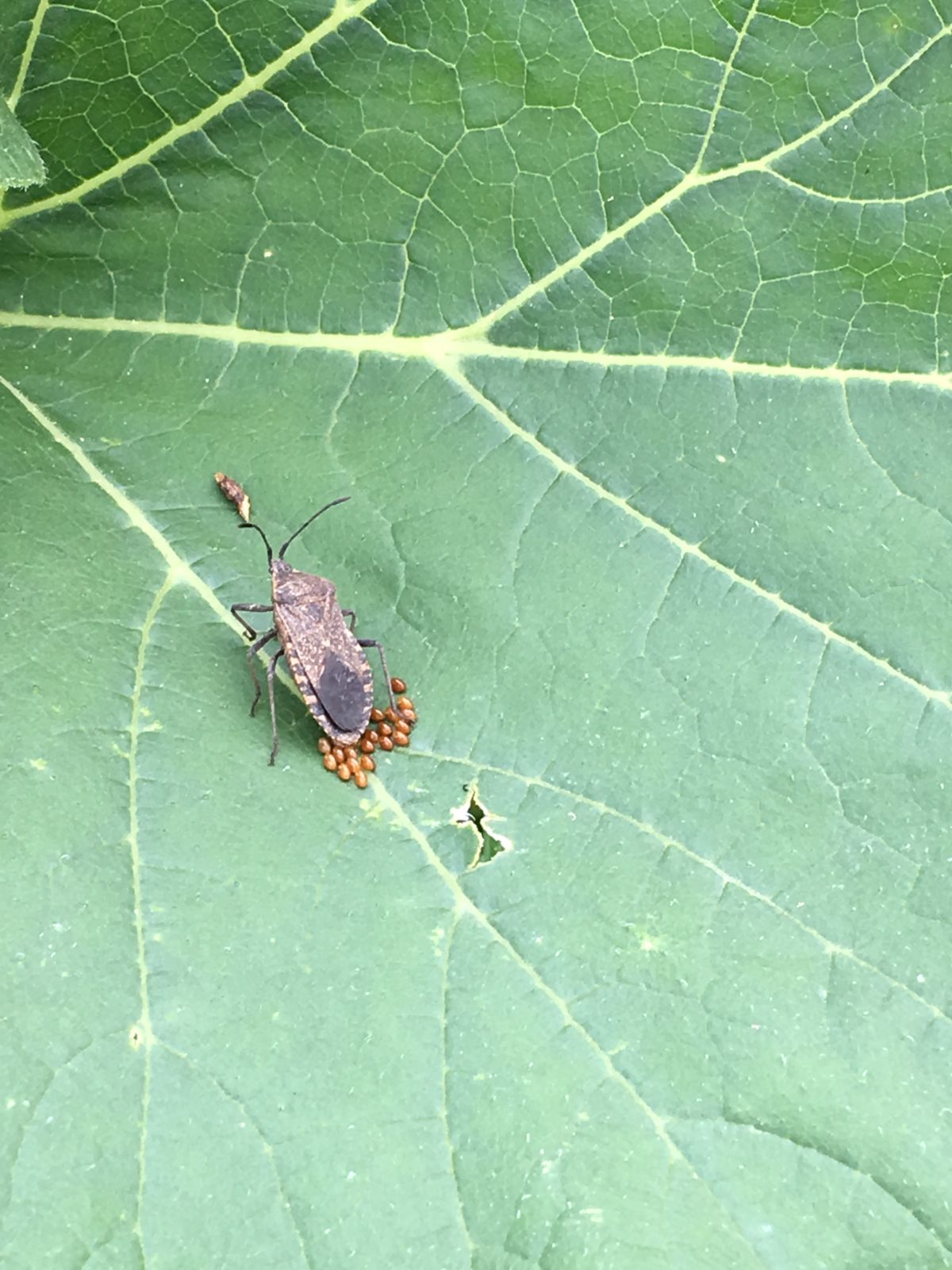Squash bugs can be tricky to find and even more of a struggle to kill. Ayanava Majumdar, Extension entomologist with the Alabama Cooperative Extension Service, says he has gotten several calls from producers about squash bug infestations. According to Majumdar, there are no easy solutions to squash bug infestations, which is why this pest continues to be a major issue for cucurbit growers.
Squash bugs have piercing and sucking mouthparts. They cause crop damage by inserting toxic saliva into the plant, which causes it to suddenly wilt.
The pest can feed at all life stages, from nymph to adult. Growers may see the shiny red egg clusters on different parts of the plant. Eggs will hatch in about seven days. Majumdar says the squash bugs take roughly eight weeks to mature. During this stage, they feed in clusters alongside the adults. This is how the outbreaks begin. The nymphs are sort of gray in color, and they do not have wings. The adults are flatter, dark-colored insects.
Squash bugs are great hiders. They can hide under different plant parts or debris, making it difficult for producers to scout. “On hot days, you can see the adults and/or nymphs hiding under the plastic. They may stay close to the drip lines to get moisture,” Majumdar says. He adds the best scouting method is to look for egg masses, nymphs and adults around the base of the plant.
Squash bugs also carry a deadly bacterium that can infect plants with a disease called cucurbit yellow vine disease. “Squash bugs will carry this bacterium inside the body throughout its life. It causes a tremendous increase in disease as the adults keep migrating from plant to plant and field to field,” Majumdar says. So, the best way to control the disease is to kill the insect early on.
Although there is no known way to control squash bugs, Majumdar offers some recommendations. The bugs do have natural enemies, but the beneficials kill the squash bugs slowly, so the bugs are still feeding during that time.
Majumdar says it is crucial to avoid stress on the plants. “Reducing stress helps the plants resist the bugs,” he explains.
For smaller production systems, growers can try pest exclusion systems. “(Pest exclusion systems) are a super light insect barrier. They allow sunlight and rain, but will stop the insects,” Majumdar says. He adds that it may be a good idea to put the exclusion system on the cucurbit transplants, then remove it when the plant begins to flower. This method may avoid early-season infestation.
For medium-size production systems, trap crops may be a method to consider. Read an article on using hubbard as a trap crop here.
Regarding organic insecticide recommendations, products containing spinosad and pyrethrin could be effective. Majumdar says there is a limited number of products that can be used. The biggest issue with using insecticides is trying to figure out where the bugs are located on the plant.
Majumdar urges producers to reach out to their local Extension agent for bug identification and management methods.
Hear more from Majumdar:
Share this Post











